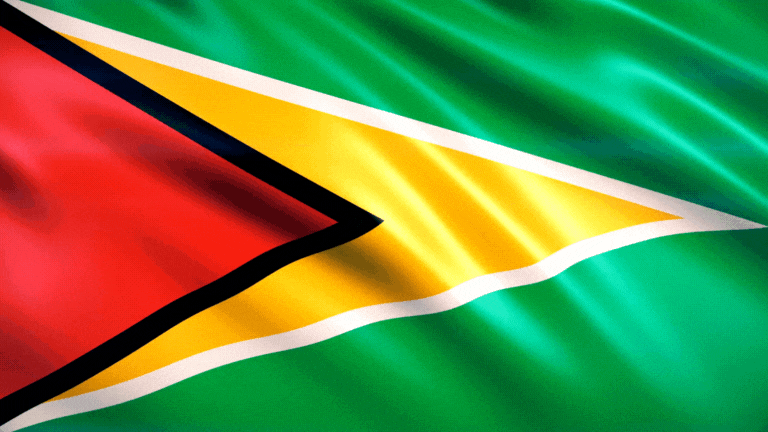Please be aware that this article may contain links to products and services we recommend. If you click on any of these links, we may earn a commission at no extra cost to you. We only endorse products and services that we believe will add value to our readers. Learn more here.
Guyana Flag: History & Symbolism
Hack The Quiz
5/8/20242 min read
This article explores the history and symbolism of the Guyana flag, explaining the country’s location in South America and how the flag’s bold design represents Guyana’s independence, natural wealth, and future aspirations.
Where is Guyana?
Guyana is located on the northern coast of South America, bordered by Venezuela to the west, Brazil to the south, Suriname to the east, and the Atlantic Ocean to the north. Known for its lush rainforests, vast rivers, and natural beauty, Guyana is one of the few South American countries where English is the official language.
Guyana gained independence from the United Kingdom on May 26, 1966, and the national flag, known as the "Golden Arrowhead," was adopted the same year. The flag’s design reflects the country’s rich natural resources and its vision for the future.
The History of the Guyana Flag
The flag of Guyana was officially adopted on May 26, 1966, the same day the country gained independence from British colonial rule. Designed by American vexillologist Whitney Smith, the flag was selected to symbolize Guyana’s bright future and the unity of its people.
Known as the "Golden Arrowhead" due to the prominent yellow arrow shape in the design, the flag incorporates bold colors that reflect the nation’s natural resources, the strength of its people, and the country’s hopes for progress. Since its adoption, the flag has become a source of national pride and unity for the people of Guyana.
Breaking Down the Guyana Flag’s Design
The Guyana flag features a striking and modern design, consisting of a green field with two triangles—one red and one yellow—on the left side, bordered by white and black edges. Each element of the flag holds significant meaning tied to the country’s history and aspirations.
Let’s break down the elements of the flag:
The Green Field
The green background symbolizes Guyana’s vast forests, fertile lands, and agricultural wealth. It highlights the country’s commitment to protecting its natural environment and the importance of agriculture to its economy.
The Golden Arrowhead (Yellow Triangle)
The prominent yellow triangle, known as the Golden Arrowhead, represents the country’s mineral wealth, particularly gold. It also signifies Guyana’s bright future and the energy of its people, pointing forward toward progress.
The Red Triangle
The red triangle stands for the spirit of independence, the courage and sacrifice of Guyanese people, and their determination to build a prosperous future.
The White and Black Borders
The white border around the yellow triangle represents the rivers and water resources that flow through Guyana, while the black border around the red triangle symbolizes the strength and endurance of the nation as it works to overcome challenges and build unity.
Final Thoughts
The flag of Guyana is a bold symbol of the country’s natural wealth, its journey to independence, and its commitment to progress. The Golden Arrowhead highlights the nation’s potential and aspirations for the future, while the colors reflect its rich resources and the strength of its people.
Since its adoption in 1966, the flag has become a cherished emblem of national pride, flown proudly during national celebrations like Independence Day and international events. It serves as a reminder of Guyana’s rich history, its natural beauty, and its bright future.
Expand your mind ...
Explore trivia that broadens your understanding and knowledge of the world.
WE ARE HERE FOR YOU
JOIN US and hack the quiz
info@hackthequiz.com
© 2024. All rights reserved.



